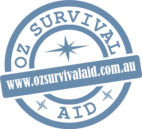Having a fire is just one of those things people create when camping! It’s basically tradition! However these days some public camp sites do not allow visitors to construct a camp fire, and cooking can only be done using your own gas equipment and/or provided barbeque facilities. This is due to the fact that camp fires do have the potential by some to establish destructive bush fires. Bush fires or wild fires in Australia have had devastating catastrophic impacts, killing literally hundreds of people throughout our history, burning down thousands of houses and farms, destroying people’s lives, killing incalculable numbers of wildlife and wiping out vast amounts of bushland.
Therefore some planning is involved to check beforehand the situation with camp fires at intended sites. Also be aware that fire restrictions are often enforced at certain times of the year when it’s either hot, windy and/or dry. Fires have the very real and often amazing ability to escalate out of control within seconds. Bush fires can start when driving off-road through dry grass if the grass accumulates under the vehicle, becoming combustible around hot components like exhausts, usually resulting in the loss of the vehicle. A fire extinguisher is a must that is readily available in the vehicle, and it’s always a good idea to have one when travelling and camping.
When establishing a camp fire try if possible to utilise one already created to reduce the visual impact of multiple camp fire sites dotted all over the place. Utilising one already used also makes the job easier and may already have a ring of rocks to help contain the fire. If starting from scratch first choose a site away from combustive bushland, clear away leaf litter and dead vegetation so this will not alight, and be careful and selective when choosing fire wood so as not to destroy native habitat for wildlife and insects.
A good option is to collect dry fire wood alongside roads and tracks as this is already disturbed land and may contribute to reinforcing bush fire containment boundaries, however do not do this in a National Park as the entire landscape is protected. Pack old newspapers for fire starting. Proper fire starting techniques should never relay on using petroleum fuels as this can be dangerous, instead consider packing specific fire starter substances and gear, even first aid alcohol wipes or even alcohol hand sanitiser gels if desperate when the timber is a bit wet.
And always remain vigilant when using a camp fire. Ensure that logs will not role out of the fire when burning, and always monitor if having to burn long sections of timber, especially if trying to burn these in half to allow the making of a more compact fire. Same with portable and fixed outdoor BBQ’s, as gas does leak and excessive fat / oil accumulation can ignite. Always be vigilant of children as it is very easy to trip over near a camp fire. Often it is a long journey to medical assistance if someone gets burnt, and consider packing burn treatment creams and burn specific bandages in the first aid kit.
Never forget that many camping accessories are highly combustible such as sleeping bag, clothing and tents made from synthetic materials. A synthetic tent can go up in flames within seconds and literally encapsulate any occupants inside with hot melting materials that can burn into exposed skin. When handling cooking equipment make sure to have appropriate grabbing implements and remember some handles can get very hot. And never dispose of rubbish in a fire unless it’s just paper, as glass and metal will simply remain posing risks of cutting people and wildlife. Plastic will not readily break down and will remain to contaminate the environment, not to mention exposure of extremely toxic fumes emitted by burning plastic.

